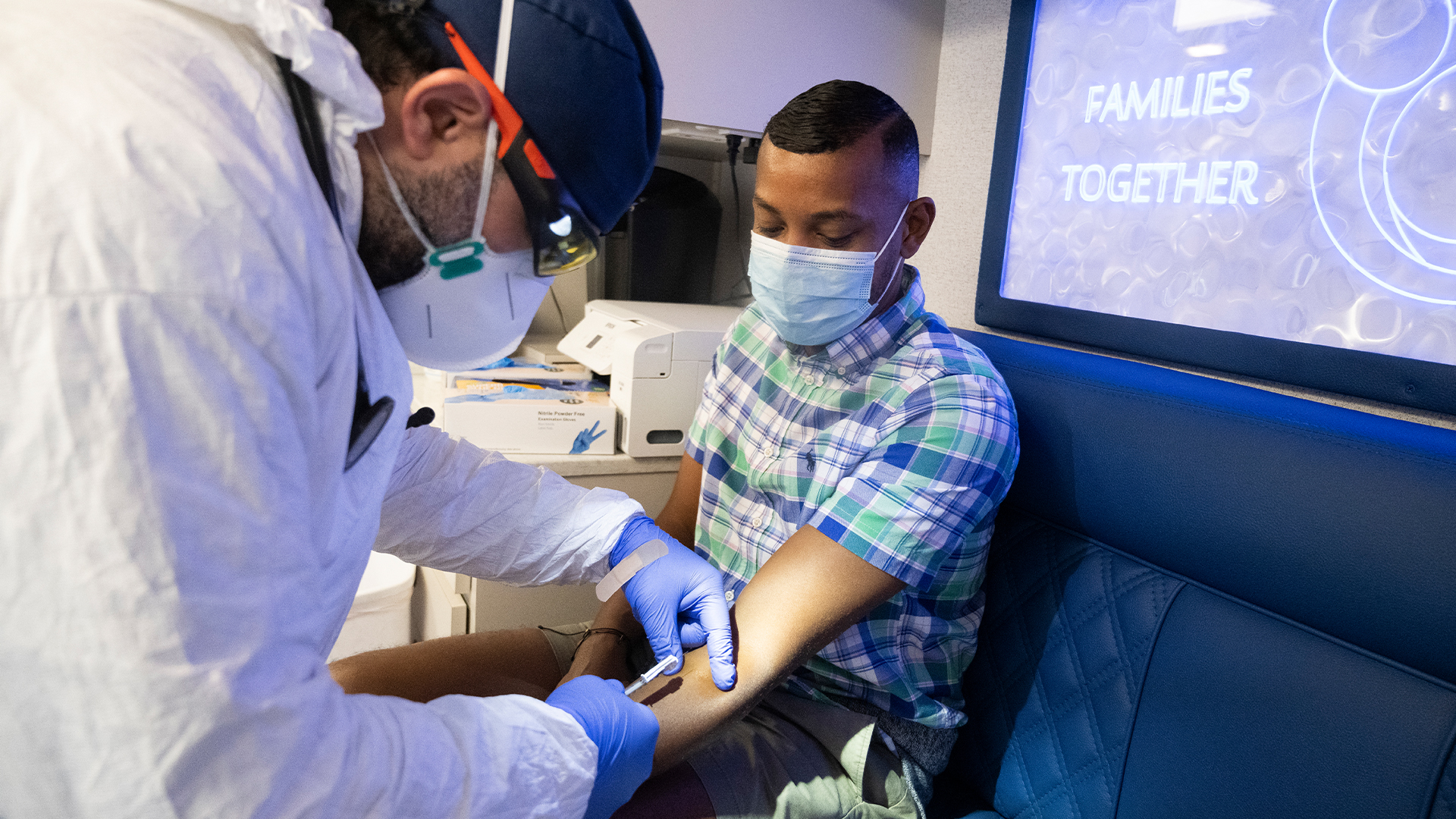
More than 570 cases of mpox have been detected in the U.S. so far in 2024 — nearly double the number seen by this time last year.
This infection rate doesn't come close to that seen at the peak of the mpox outbreak in early August 2022, when the U.S. saw an average of about 470 new cases in a week. However, the new data highlight that mpox is still circulating and that there's still a need for people who are at risk of infection to get vaccinated.
The most widely used mpox vaccine in the U.S., called JYNNEOS, is given in two doses spaced a month apart. A person is fully vaccinated two weeks after their second dose, and no booster shots are currently recommended. You can check whether you're eligible for the vaccine and where to get the shots on the Centers for Disease Control and Prevention (CDC) website. Various local health departments, such as those of New York City and San Francisco, also have their own vaccine-site finders.
The vaccine is not widely recommended to everyone. Rather, select groups — for example, gay and bisexual men with recent sexually transmitted infection (STI) diagnoses — have been identified as at risk of mpox and made eligible for the shots.
Related: Should everyone get a monkeypox vaccine?
"Most of the cases that we're seeing reported are either unvaccinated or under-vaccinated, meaning they either never received a vaccine, or they only got one dose," Dr. Jenni McQuiston, deputy director of the CDC's High-Consequence Pathogens and Pathology division, told ABC News.
Mpox, formerly known as monkeypox, is caused by a relative of the now-eradicated variola virus, which causes smallpox. Mpox viruses come in two broad types: clade I and clade II. Clade I is more likely than clade II to cause severe and fatal disease. Although clade I has not been detected in the U.S. to date, it's possible that travelers could carry the viruses to the country from other places, such as the Democratic Republic of the Congo, the CDC cautioned in December 2023. The JYNNEOS vaccine guards against both clades.
In general, mpox viruses can cause flu-like symptoms, such as fever, muscle aches, fatigue and swollen lymph nodes. However, during the outbreak's peak in 2022, not all cases involved such symptoms. The disease's characteristic pox rashes typically start out as discolored patches and then progress to raised bumps, blisters, and large, pus-filled pimples that scab over and slough off. Depending on the case, these rashes may first appear around the face and in the oral cavity and then spread to the extremities, or they may initially show up around the genitals and anus.
People with severely weakened immune systems, including those with HIV; children younger than 1 year; people with a history of eczema; and people who are pregnant face a higher risk of severe disease from mpox. The disease most often spreads through close contact with an infected person, especially through contact with their rashes.
Since May 2022, when the mpox outbreak hit the U.S., the country has seen more than 30,000 cases, most of which occurred in 2022. By the start of 2023, infection rates had slowed — the U.S. recorded 298 cases between Jan. 1 and March 23, 2023. Compare that to this year, when 576 cases were reported in the same time frame, according to the CDC. (The agency adds that these case counts are provisional and subject to change.)
More than 110 of the cases this year were in New York City, 64 were in California and 50 were in Florida.
Anyone can catch mpox, but from the start of the outbreak, the disease has disproportionately affected gender-diverse and transgender people and also men who have sex with men. People in these groups who have had recent STI diagnoses or who have had more than one recent sex partner are recommended to get vaccinated for mpox.
However, CDC data suggest that mpox vaccination among these and other at-risk groups is not as high as it should be, with large portions of the at-risk population missing one or both vaccine doses.
"We felt like it was really important to get the word out that there is a continued risk from this virus. It's still here," Dr. Brandy Darby, director of the Division of Surveillance and Investigation in the Office of Epidemiology at the Virginia Department of Health, told CNN. The department recently issued a notice about the dozen mpox cases it's seen so far in 2024, in part because it saw 12 in all of 2023.
"We also wanted to give people time to protect themselves ahead of Pride season" in June, Darby said. "We're hoping this might encourage people to go ahead and get vaccinated so they can go out and enjoy their celebrations and not have to worry so much about mpox."
This article is for informational purposes only and is not meant to offer medical advice.
Ever wonder why some people build muscle more easily than others or why freckles come out in the sun? Send us your questions about how the human body works to community@livescience.com with the subject line "Health Desk Q," and you may see your question answered on the website!







